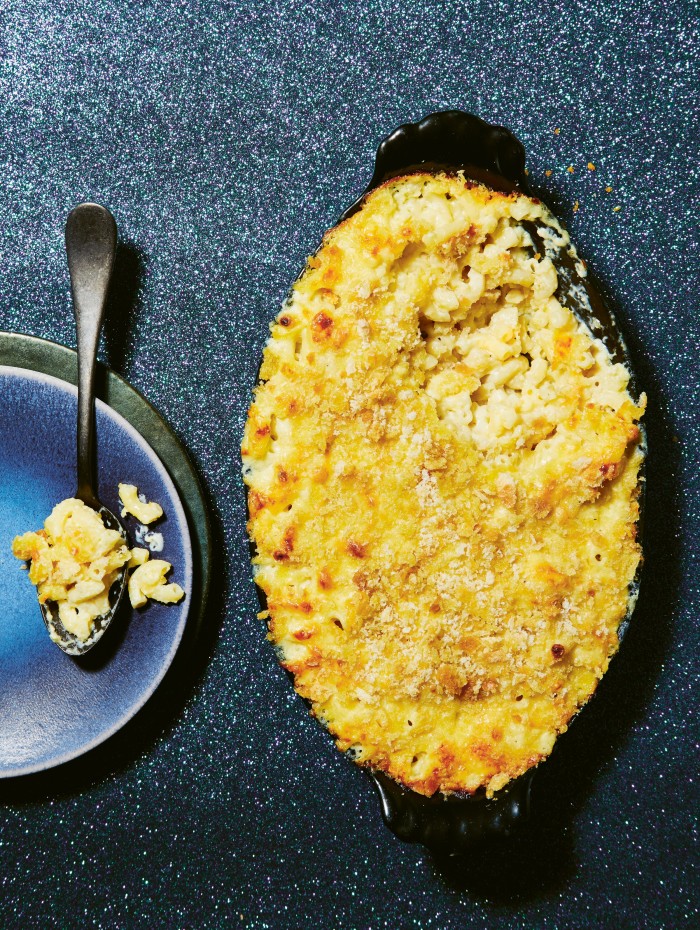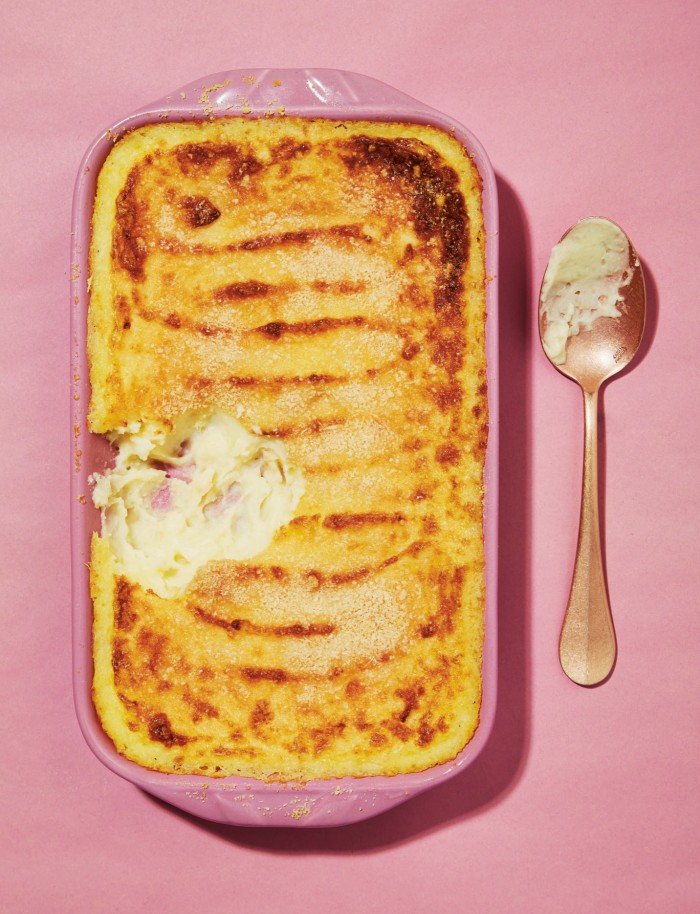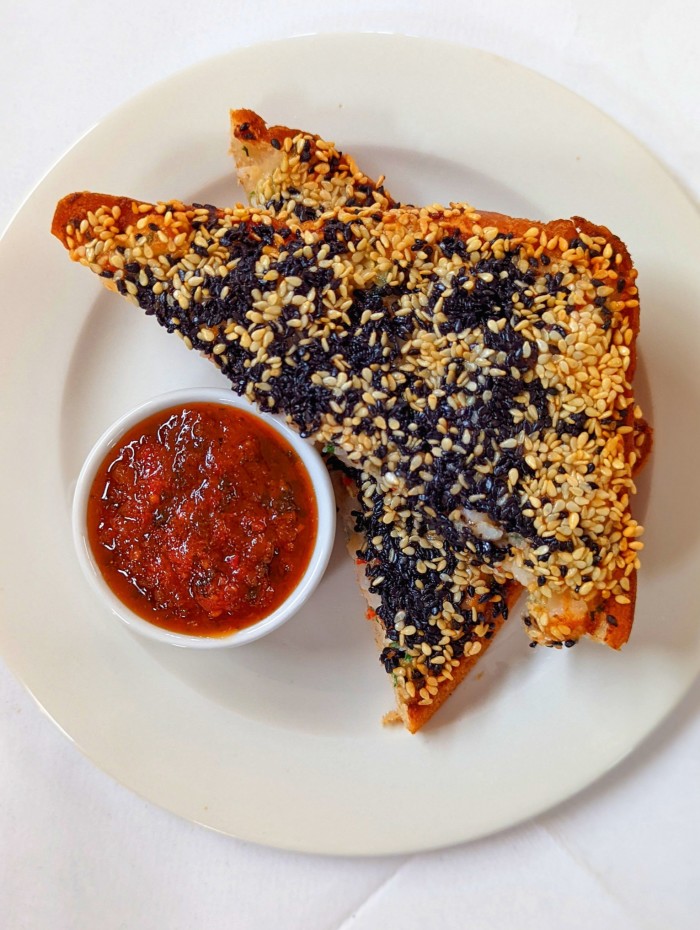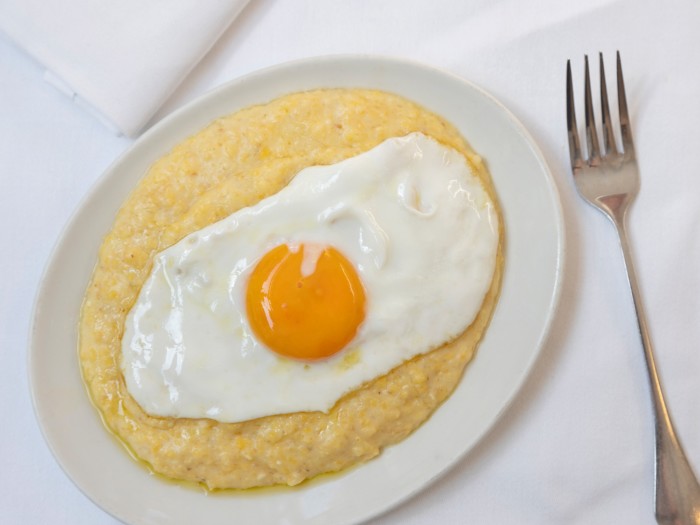What’s your go-to comfort dish?

Roula Khalaf, Editor of the FT, selects her favourite stories in this weekly newsletter.
When life is getting us down, we take comfort in the simplest things. Toast + butter = happiness. Sometimes that extends to toast + butter = dinner. But there’s nothing wrong with that. If one definition of comfort food is food we make for ourselves on autopilot, toast is king. As Emily Kydd, author of the upcoming Seriously Good Toast (Hardie Grant), points out, the beauty of toast is not just that it’s toast but how easily toast can be customised and made even more comforting. Just add cheese for Welsh rarebit. Or ham. Or eggs. Or all of the above with bechamel to make what Kydd calls “Monsieur & Madame” croques.

Some would argue comfort food should always be easy to make: when a recipe calls for bechamel – however simple that may be for some to rustle up – it has failed the brief and moved beyond “comfort” into “a bit of a drag”. I say comfort is in the eating, regardless of how much labour is involved. But it helps when someone else is doing the work. And it really helps when no effort is required other than ordering on Deliveroo. Nando’s chicken has a following in my household for a reason.
What exactly is comfort food? Carbs are a primary building block. Bread. Pasta. Potato. Rice. Noodles. Food writer Laura Goodman reserves the final chapter of her book Carbs (Quadrille) for dishes that pile carb on carb and are therefore the apotheosis of comfort. Among them is a recipe for roast potatoes with crunchy rice, a Friday-night staple of her Jewish grandma.
Dairy also plays a key role. Anything buttery, cheesy or creamy is bound to be comfort-y, whether sweet or savoury. We all have our own hierarchy of dairy-carb favourites. I prefer mac and cheese to potato dauphinoise, but lasagne trumps both. For dessert, rice pudding beats bread and butter pudding, but only on a technicality (the latter contains raisins).

Goodman makes the case that comfort food is as much about the mode of eating as the ingredients. “I want food that I can slop unceremoniously into a sofa-friendly vessel, collapse with, and luxuriate in,” she writes in praise of bowl food. For me, that includes stews, broths and curries.
Comfort food comes into its own at times of illness or crisis. Goodman’s go-to pick-me-up when poorly is mashed potato with chives and spring onion (“for vitality”) served with a pool of melted butter. In her book On Immunity, writer Eula Biss shares her family prescription for a bad cold: buttered toast dipped in warm milk. And in The Year of Magical Thinking, Joan Didion, mourning the loss of her husband, acknowledges the “instinctive wisdom” of the friend who brings her daily quarts of spring onion and ginger congee: “Congee I could eat. Congee was all I could eat.”

Food critic Grace Dent characterises comfort foods as “what we eat when nobody’s looking”. When Nigella Lawson admitted recently that she served – shock, horror – Twiglets to her guests as a starter, it prompted a flurry of articles about the death of the dinner party. I wonder, however, whether Lawson wasn’t affirming what anyone who’s thrown a dinner party already knows, that nibbles are always the best bit and we eat too much of them because they’re often comfort food par excellence.
Restaurateurs like to serve comfort food in elevated versions. Caravel’s chef Lorcan Spiteri draws a distinction between “comfort food” and the more refined “comforting food” that lands on his menu. But the satisfaction levels are the same. One of his most popular dishes is sesame prawn toast with chilli jam, which exemplifies another key aspect of comfort food, nostalgia. Like me, Spiteri grew up going to Chinese restaurants. A fondness for sesame prawn toast is practically hardwired into our souls.

For Bocca di Lupo’s chef patron Jacob Kenedy, it’s best summed up by a “simple” restaurant dish of creamy polenta with fried egg and parmesan. Yes, the dish uses stone-ground polenta with 24-month aged parmesan and requires hours of slow-cooking. But the result coddles like a duvet: “You don’t get softer, richer, blander or more filling,” says Kenedy.
At home, though, those criteria for what constitutes comfort food go out the window. There it often boils down to family favourites. Kenedy cites his mum’s baked chocolate rolls, filled with jammy stewed apricots or prunes spiked with brandy. And his husband’s chicken and cider casserole and fish pie. This is comfort rooted in familiarity and the warm hug of food made by people we love. Notwithstanding my personal favourite of Tunnock’s dunked in cream, there is really nothing better.
Comments